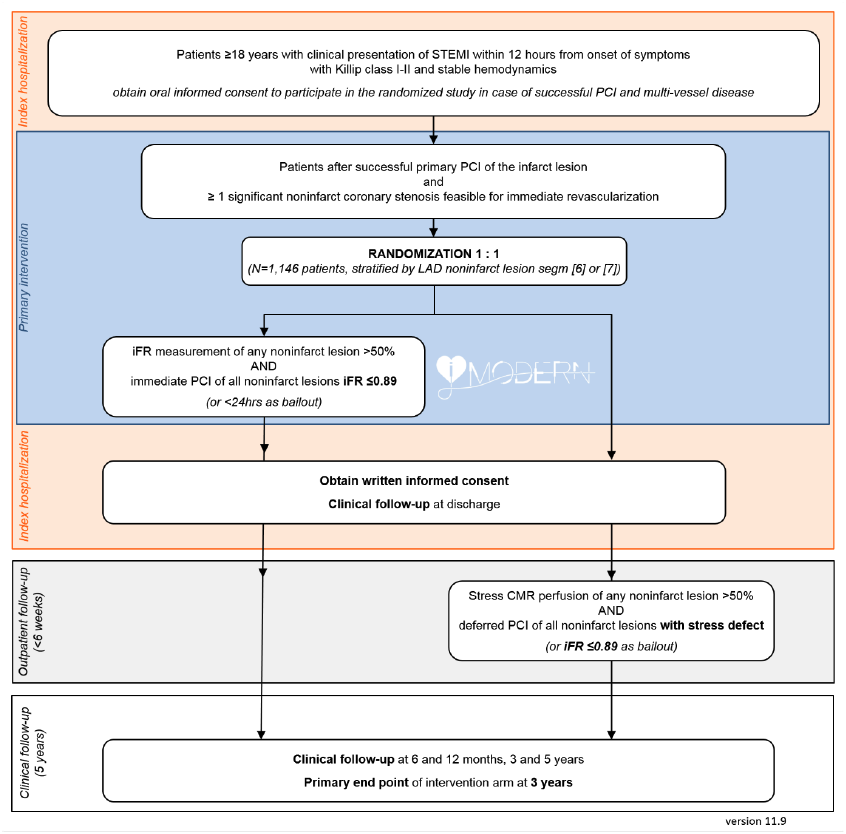Immediate pressure-guided multivessel revascularisation after an acute myocardial infarction
The iMODERN study will compare immediate treatment of all noninfarct lesions, during the acute procedure, to a control group. The control group arm has their noninfarct lesions treated within 6 weeks after the myocardial infarction. Of course, the myocardial infarction was treated directly in all patients.
In patients with an acute myocardial infarction, 40-60% have multivessel disease. This leads to an increased chance of mortality and disability. It is not recommended to revascularise noninfarct narrowings during the acute intervention. However, recent investigations suggest the opposite and show improved outcome after direct revascularisation of all noninfarct narrowings. An additional advantage of a direct approach is that only one catherisation procedure is needed for the treatment of the coronary artery disease, instead of two. In this way, it is expected that patients can begin with cardiac rehab, and return to their regular work and activities, earlier.
To see which study arm fares better, the rates of mortality, 2nd myocardial infarctions, and heart failure will be assessed at 3 years of follow-up. As such, the results are expected by autumn 2025. This study was performed with grants from Health Holland, Philips Volcano, and Biotronik.





